So, what’s the connection between the tube and IFS you ask?
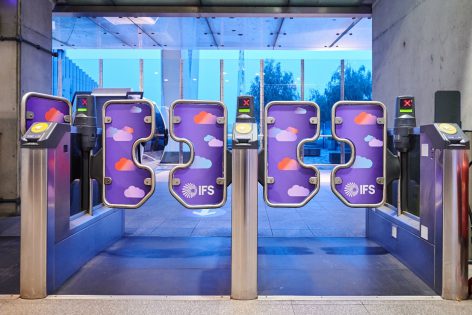
Our signature purple cable cars have been connecting Greenwich commuters, located close to the O2, to the Royal Victoria Docks for almost a year now. The novelty of our service has made it a popular destination, offering tourists and locals alike an iconic view of London’s skyline and the River Thames.
I was lucky enough to attend the launch of the TfL-London partnership back in October 2022 where I discovered that the partnership had a deeper level of collaboration than initially anticipated. One of our customers, Doppelmayr, specializes in the ropeway technology used by these cable cars (and those in alpine ski resorts and public transport across Europe) as well as running the very cable cars using IFS software.
TfL selected Cubic to support in ticketing, and Cubic integrated Google Pay’s tap-to-pay into the system in 2019 – which you’ll have spotted if you’ve ever travelled around the city with your smart phone, and it’s Cubic Transportation, an IFS customer, who not only implemented the gates but who now run the service that allows millions of Londoners and visitors to travel seamlessly across London and yes, you guessed it, Cubic Transportation installed these gates using IFS software!
Now, a year on from the launch of the partnership and I had the opportunity to attend a private tour of the London Underground’s Charing Cross station along with Google Pay to learn about another interesting and hidden story.
Hidden history of Charing Cross station
The hidden tour of the secret Underground station started with two possible etymologies of the name – Charing Cross – one possibility being the breaking down of “Chère règne” (Charing) from the French for ‘dear queen’ – alluding to King Edwards I’s wife, Eleanor, whose body was brought back from Lincolnshire to London via train to rest to lie in Westminster Abbey in 1290, and for whom a memorial cross stood firmly in her memory until 1647.
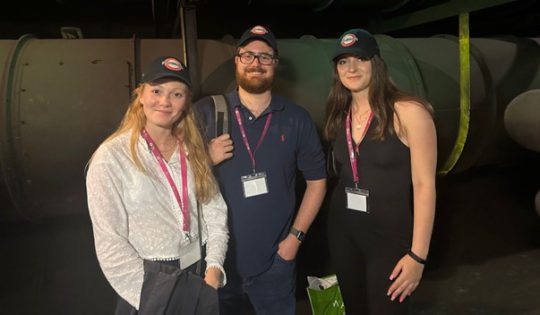
Another theory suggests that it comes from the old Anglo-Saxon word “cierring,” which means “river bend.” This is because the station is located on a bend in the River Thames.
The history of the station also has many possible roots. Charing Cross was originally on the District line (Embankment) and before the Bakerloo-and-Northern-line Charing Cross branch, they built a further two stations called Charing Cross and Trafalgar Square. In 1907 the two stations merged with one Charing Cross on the District line and the other Charing Cross (Embankment) changed to the Strand (but there was already a Strand on the Piccadilly line!)
For 60 years, the station names kept changing due to the separate stations housing the Northern line on one end and the Bakerloo line on the other. While passengers were advised not to change lines at Charing Cross due to its enormous size. The station we know today was scheduled to open on the Queen’s Jubilee in 1977. However, it was not until 1979 that it was officially opened, with Prince Charles visiting the station. This ended the era of the monopoly-named saga and brought light to the present Charing Cross. However, a hidden station remains stuck forever in a 1999 time-warp, as it was last publicly used at that time.
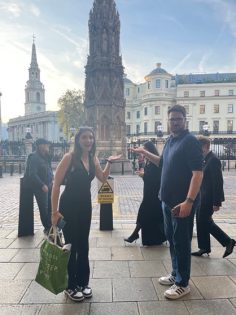
A time capsule in the heart of the city!
This can be seen in the posters in the station (which are changed only by film crews for films such as Morbius, Thor, Killing Eve, Paddington and Sherlock as well as music videos by Madonna, and Dua Lipa’s BRIT awards stint which saw her dancing in the tube and then appearing magically on stage) and in the very colors and embellishments of the actual station – no longer for public use and reserved only for the likes of film stars and software companies…
The walls themselves have design flourishes and bright block colors with the terrazzo flooring concealing black and brown stone specs to represent the different colored station lines; toxic kermit green tiles on the walls to challenge the muted colors on the Victoria line; fluorescent yellow ‘Way out’ signs with matching yellow blocks on the walls providing ease-of-visibility of the exits.
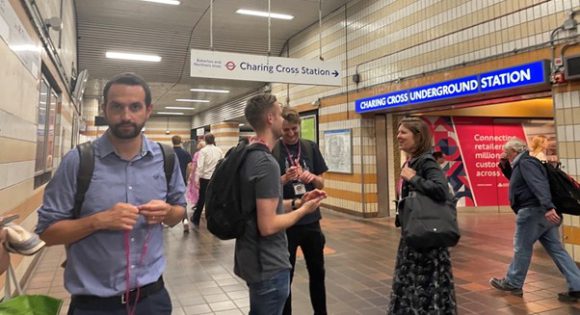
Now sitting empty, the secret passage has many uses – the two hundred meters comes in very handy for meeting the extra demand for transportation following concerts when 5 million Harry Styles’ fangirls need to return home from Wembley or for when the crowds are retreating after watching a football match. Film crews have also made ample use of the empty space as the tube is so recognizably British and great for film director’s wanting to set the scene. Skyfall’s tube chase has been Charing Cross’s biggest project to date with a whole sequence filmed in various parts of the station over the course of 5 months, with a custom crew of hundreds despite only 10 minutes of the 2hr 20 film making the cut. Walking around the empty escalators, I left the TfL Underground tour feeling like I’d left a filmset.
Traveling on the tube is always a treat…but experiencing the British Catacombs and disappearing behind a ventilation grill like James Bond was a little bit iconic.
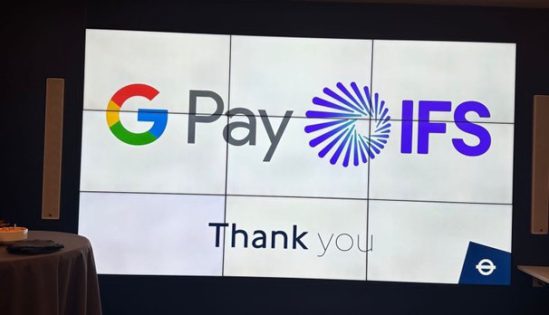
Thank you TfL team for a great day out!
You can ride the IFS Cloud cable cars or book a Hidden London tour (at Charing Cross, Aldwych or Baker Street) for a fun day out – simply search IFS Cloud Cable Car or Hidden London.
Any questions or comments?
We’d love to hear them so please leave us a message below.
Follow us on social media for the latest blog posts, and industry and IFS news!